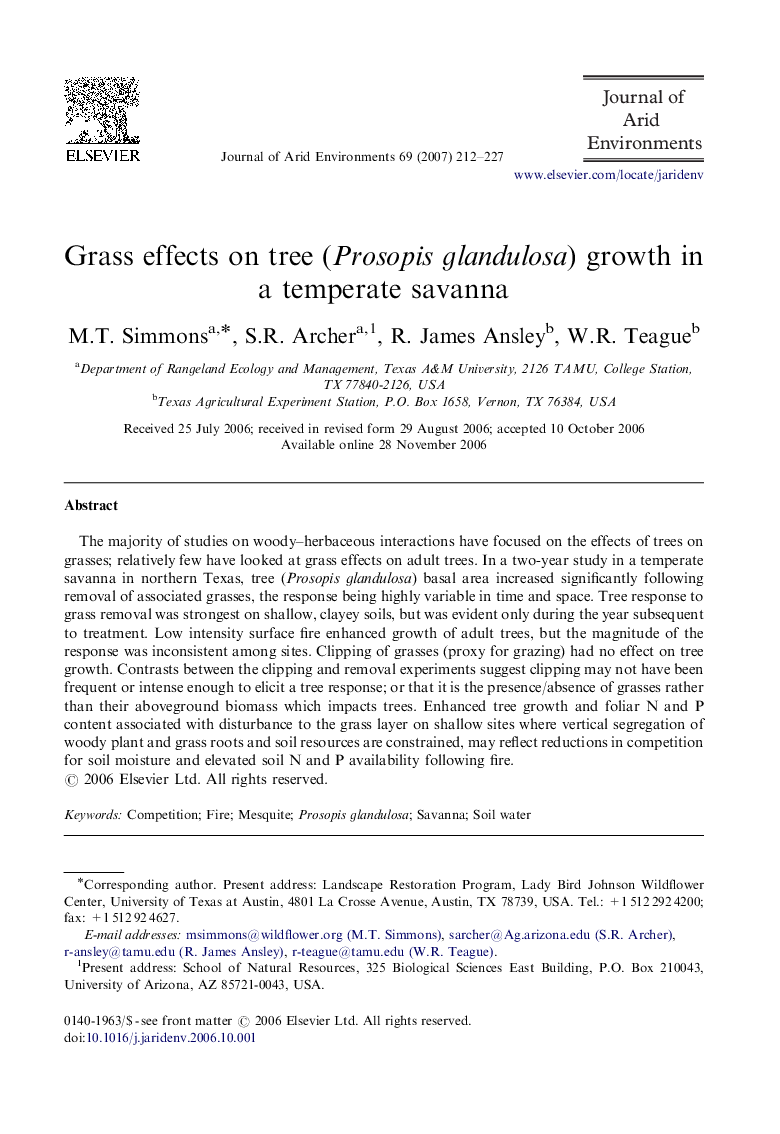| Article ID | Journal | Published Year | Pages | File Type |
|---|---|---|---|---|
| 4394509 | Journal of Arid Environments | 2007 | 16 Pages |
The majority of studies on woody–herbaceous interactions have focused on the effects of trees on grasses; relatively few have looked at grass effects on adult trees. In a two-year study in a temperate savanna in northern Texas, tree (Prosopis glandulosa) basal area increased significantly following removal of associated grasses, the response being highly variable in time and space. Tree response to grass removal was strongest on shallow, clayey soils, but was evident only during the year subsequent to treatment. Low intensity surface fire enhanced growth of adult trees, but the magnitude of the response was inconsistent among sites. Clipping of grasses (proxy for grazing) had no effect on tree growth. Contrasts between the clipping and removal experiments suggest clipping may not have been frequent or intense enough to elicit a tree response; or that it is the presence/absence of grasses rather than their aboveground biomass which impacts trees. Enhanced tree growth and foliar N and P content associated with disturbance to the grass layer on shallow sites where vertical segregation of woody plant and grass roots and soil resources are constrained, may reflect reductions in competition for soil moisture and elevated soil N and P availability following fire.
